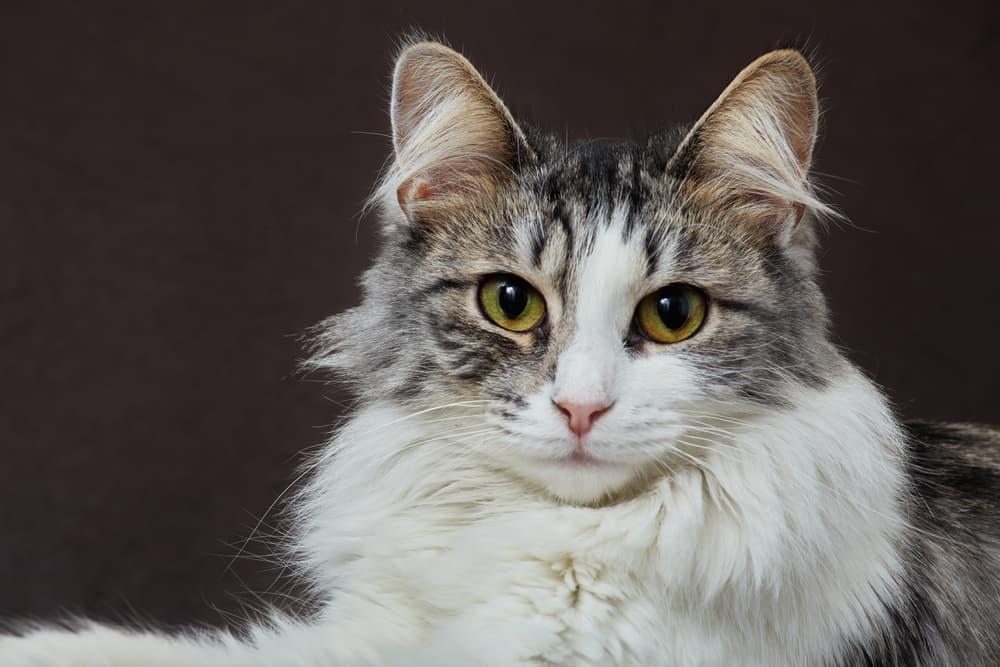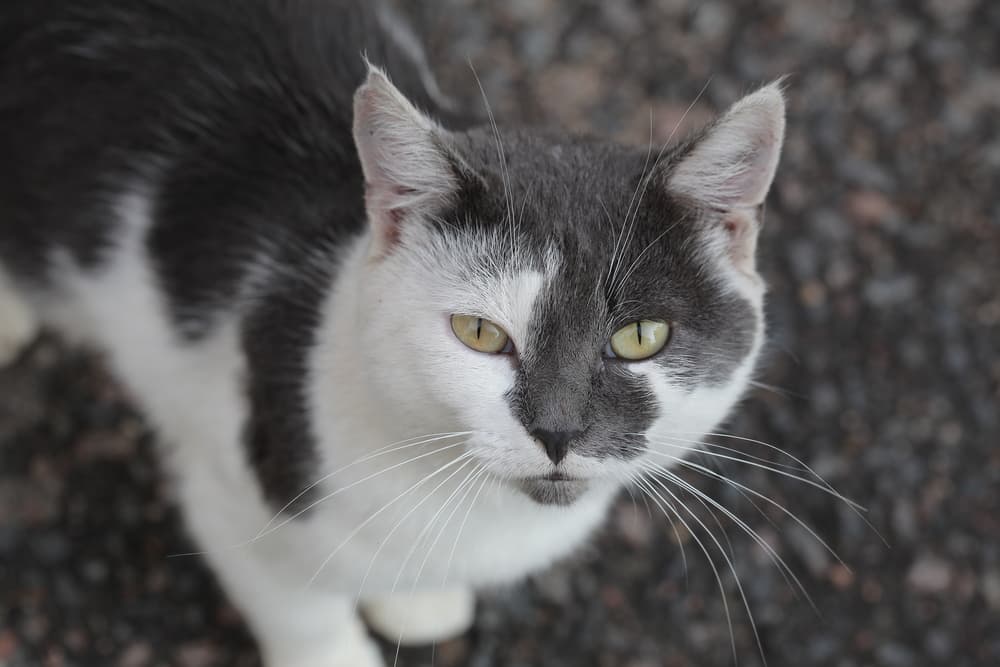Miliary Dermatitis in Cats

Overview
Showing our cats affection is an everyday occurrence, but it can be very upsetting to pet your cat and feel bumps on their skin. This issue, called miliary dermatitis, is prevalent and treatable, but there are many health issues that can cause it.
What Is Miliary Dermatitis in Cats?

Miliary dermatitis is a type of skin inflammation specific to cats that can be caused by many different things. It is common, and most cats with miliary dermatitis are easily treated.
What Does Miliary Dermatitis Look Like?
The specific appearance of miliary dermatitis is a lot of small pink bumps on the skin, called papules, that are typically about one to two millimeters in diameter. If scratched, these papules develop a small crust.
Causes of Miliary Dermatitis in Cats

There are many potential causes of miliary dermatitis. The condition itself is not contagious, but the cause of miliary dermatitis in your cat might be.
Parasitic Causes of Miliary Dermatitis
- Flea or mosquito bite hypersensitivity. Even a single bite from a flea or mosquito can cause miliary dermatitis in your cat.
- Demodex mites. Infestation with this mite can lead to itching, fur loss and redness of the skin. This mite is contagious between cats. Cheyletiella mites can also cause miliary dermatitis.
- Ear mites. These small mites, known as Otodectes cynotis, commonly cause ear infections but occasionally infest cats on other areas of the body.
- Scabies. Mites called Notoedres cati can bite cats and cause them to be very itchy. Scabies in cats is rare, but certain areas of the country, like southern California, can see this infection more often.
Immune System Causes of Miliary Dermatitis
- Environmental allergies. An allergy to dust or pollen can cause itching and miliary dermatitis in cats.
- Food allergies. Some cats are allergic to foods that cause skin conditions like miliary dermatitis. Most cats are allergic to specific meat proteins, like chicken or beef.
- Pemphigus foliaceus. This autoimmune skin disorder causes a cat’s immune system to attack the skin, causing inflammation and yellow to brown crusts.
Infections that Cause Miliary Dermatitis
- Bacterial infections. Staphylococci infections (known as “staph infections”) cause papules and miliary dermatitis. These infections only occur when some underlying problem is causing inflammation in your cat’s skin.
- Ringworm (fungus). Microsporum canis infects individual hair roots, causing each hair follicle to become inflamed, resulting in ringworm.
Finally, while not technically a cause of miliary dermatitis, mast cell tumors can look just like it. Mast cell tumors are small growths on the skin caused by mast cells and require veterinary diagnosis and possibly surgery to treat.
Signs of Miliary Dermatitis in Cats

Miliary dermatitis is small bumps on your cat’s body in either one or many areas. Some cats with severe miliary dermatitis can have papules covering their whole body. Many times, cats will develop small crusts over each papule, which pet parents can feel when they pet their cats. Other common signs of miliary dermatitis include:
- Hair loss
- Itchiness
- Small superficial wounds due to intense scratching
- Scaliness to the skin
- Redness to the skin
- Redness and/or brown to black debris in the ears
Diagnosing Miliary Dermatitis in Cats

Physical examination by a veterinarian is required to diagnose miliary dermatitis. However, finding the cause is more complex. Several tests that may identify the cause include:
Skin scrape. Your veterinarian will gently scrape the very top layer of the skin on affected areas and look for mites under a microscope.
Cytology. Your veterinarian may use a swab to obtain a sample of what is found on the skin. After looking under a microscope, bacterial infections may be found.
Fungal culture. A sample for culture is obtained using a toothbrush to brush your cat’s entire body vigorously. Typically, it takes at least five to seven days for any fungus to grow, so you will have to wait for results.
Biopsy. If the dermatitis is severe and treatments are not helping, your cat will undergo anesthesia to have a small piece of skin removed. The skin is sent to a pathologist who examines the skin to diagnose the issue.
Allergy testing. If allergies are suspected, testing can be performed to identify what your cat is allergic to.
If no tests reveal the cause of your cat’s miliary dermatitis, your veterinarian may recommend trying multiple things to attempt to treat the underlying cause of the dermatitis, including a prescription diet to help with food allergies or pest control to prevent fleas and mosquitoes in your home and on your cat’s body.
Treatment of Miliary Dermatitis in Cats

Treatment of miliary dermatitis involves treating the cause of the issue. Common ways of treating miliary dermatitis include:
- Antibiotics
- Antifungals
- External parasite treatment
- Antihistamines
- Prescription diet for food allergies
- Steroids
Homeopathic Treatment Options
Omega-3 fatty acids are an essential part of skin health and are found in oils such as flaxseed or fish oil. These are highly unlikely to treat your cat’s miliary dermatitis, but may decrease the severity. Speak with your veterinarian before giving supplements to ensure you are giving your cat the correct dose.
Coconut oil is another source of omega-3 fatty acids and can decrease inflammation on your cat’s skin. A small amount may be rubbed between your hands then massaged onto your cat’s skin to create a very thin layer of coconut oil. Your cat can also drink a very small amount (think 1/8 to 1/4 of a teaspoon) by mouth once daily. However, coconut oil is high in fat and can upset your cat’s stomach. Speak to your veterinarian before giving your cat coconut oil.
General Cost of Treatment
The cost of treatment is fairly low for most cats and involves a veterinary examination, flea preventives, minor skin testing and some medications by mouth such as antibiotics. Typically, you can expect to spend between $200 to $400 treating miliary dermatitis.
In some cats, chronic issues that cause miliary dermatitis, such as allergies, will cost more over time and vary significantly based on what medications and prescription food are required to get the issue under control.
How to Prevent Miliary Dermatitis in Cats

Miliary dermatitis that is caused by parasites can be prevented by keeping cats indoors and applying flea preventives year-round.
Choosing a preventive that kills mites as well is best. Ringworm and mites can be prevented by not allowing your cat to interact with other cats who may be infected. Otherwise, the rest of the causes of miliary dermatitis are not preventable.
Related Conditions
- Cheyletiellosis (walking dandruff)
- Demodectic mange
- Allergies (environmental and food)
- Flea-bite hypersensitivity
- Mast cell tumor
- Mosquito-bite hypersensitivity
- Otodectic mange
- Pemphigus foliaceus
- Pyoderma (bacterial skin infection)
- Ringworm (fungal skin infection)
- Scabies (sarcoptic mange)









